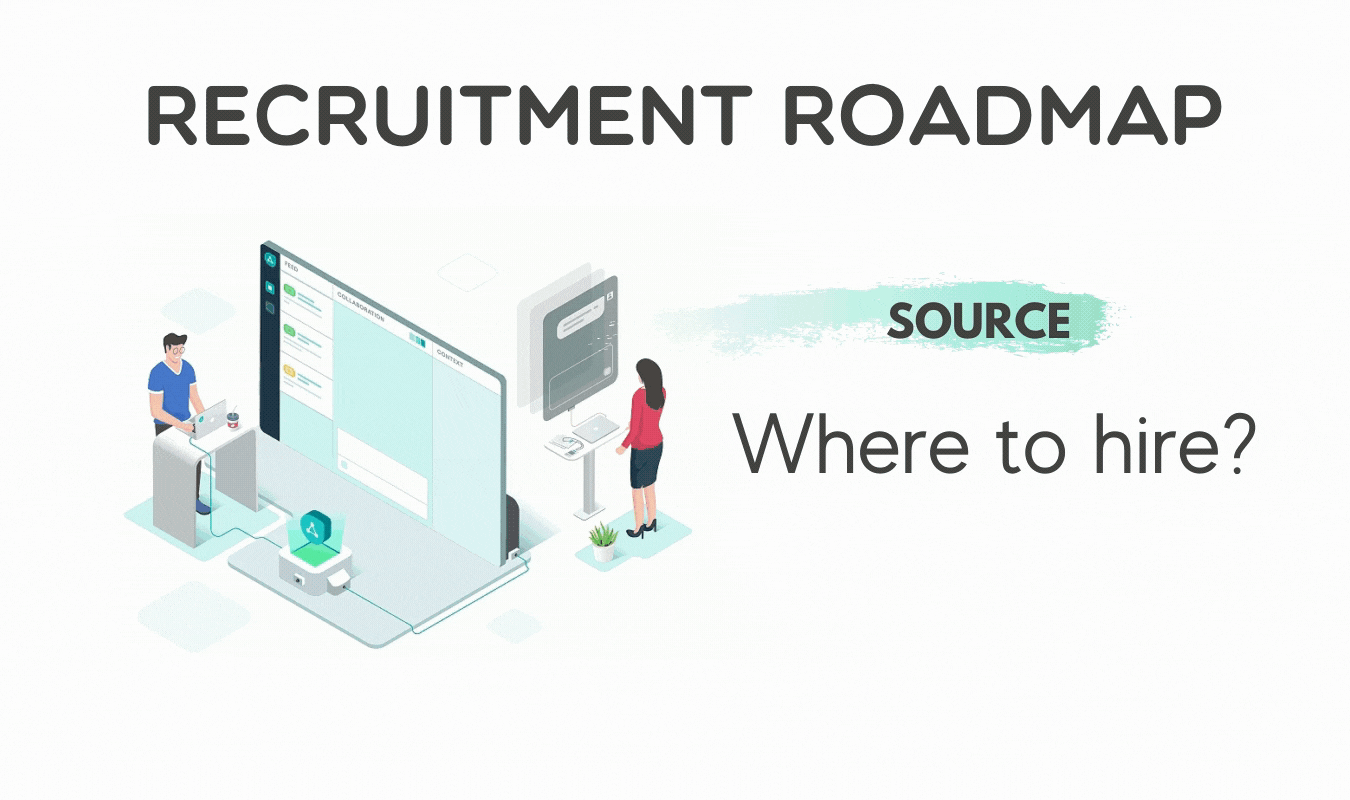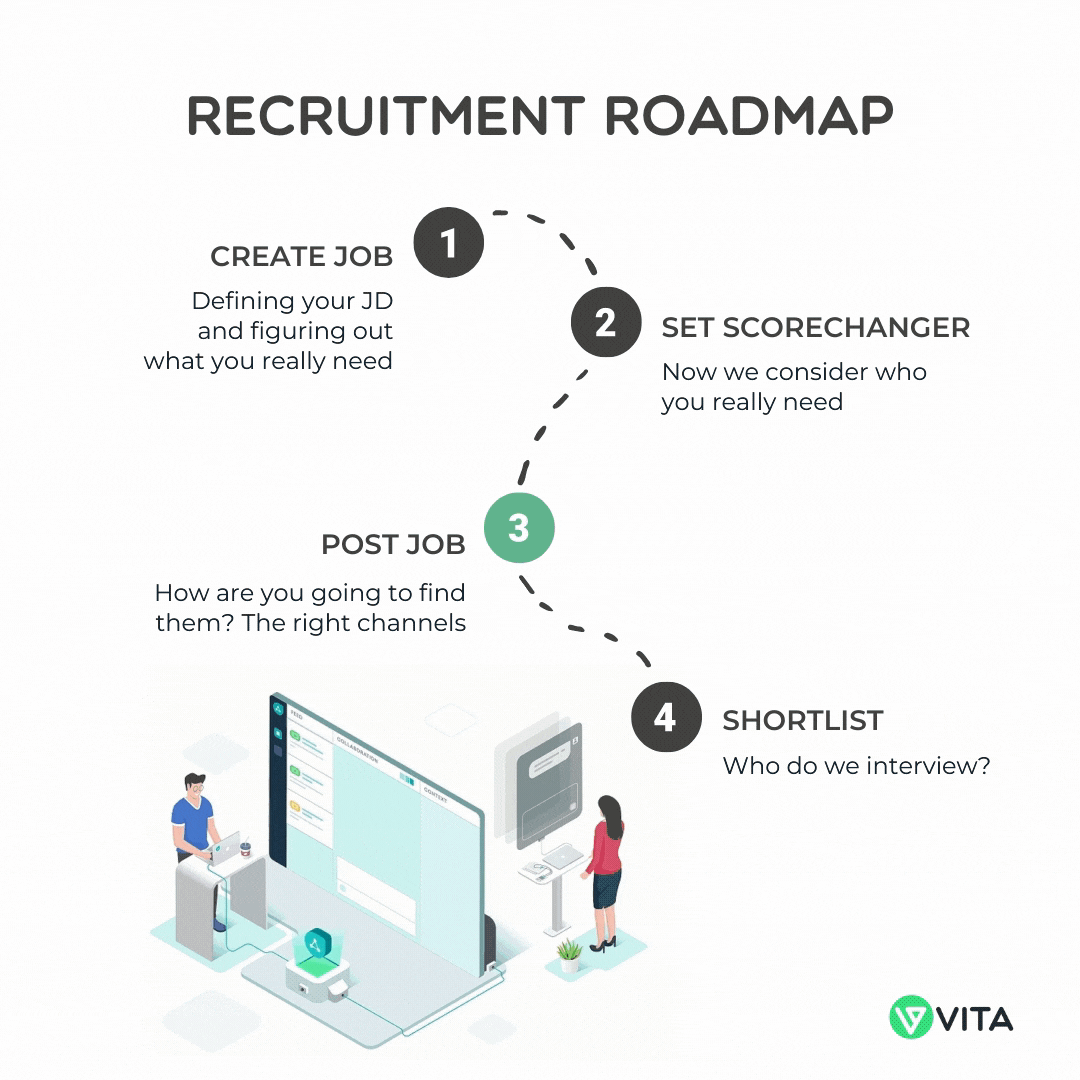Channels - How to get interested talent
Now we know what we want and who we need, we ask, where do we find them?

This is the third step in a 4 part series on Recruitment screening. Now that we know who we're looking for, here we consider where we can find the people we need.

Sourcing talent could be simple. You already have your job description done, all that's left to do is post it on all the job boards (Indeed, LinkedIn, etc.). As simple as that! But, what if I told you that by being a bit more strategic, and doing your sourcing right, you could find a far better pool of talent, while saving you hours of work?
Forgive my comparison, but sourcing is much like hunting in that, first, you need to understand the profile of the talent you are looking for and where to look, geographically simply because you can't find a camel in a rainforest.
As we mentioned at the beginning, recruitment is a lot more like sales than an administrative function. Similar to the way we think about where our target customers are, we next consider where the talent hangs out. Is it at the bar? Somewhere in the subreddits? and what kind of media they use? As an example, enthusiastic people who love working on new innovative ideas are often found on AngelList. Knowing where our talent resides gives us an edge to reach out to them seamlessly. However, when using social media platform, be sure to keep it professional. We have heard horror stories about Talent Acquisition personnel going out on a Tinder dates with sought after candidates, leaving the candidates feeling betrayed which ultimately harms the company's brand.
Do be mindful that not everyone can recruit like Amazon or Google, paying a premium of 50% above the market to get the best talent. With a limited budget, there will always be a compromise in terms of people who've already developed their skills. But identifying those ripe for picking new things up? That's your golden edge.

However, tact is required in handling compromises such as hiring a full-stack developer from an offshore location like the Philippines. The candidate's ability to communicate, and their work styles might differ from your team's. In this case, you might need to allocate some budget into L&D (Learning and Development). (psst. L&D is an area we've been investigating a lot recently. Keep eye out for out in-depth review and recommendations, where you can learn more about L&D and how to minimize your L&D budget.)
Recruitment Channels
Now that you understand the prerequisites of how to source for your talent. It is time to talk about channels. Broadly, hiring channels can be categorised into 2, external and internal. External channels are those candidates gathered from job boards. Internal channels are those gathered via referrals and social media out reach. Statistically speaking, internal channel's have been the major source of most of today's hire making up to half of the total hires made. This is natural following the hiring philosophies that a great hire should account for both hard skills, and value fit and it is not a surprise that all the best hires are those who are referred by someone internally.
Common sense would tell us this is because the referee is someone from the company itself, i.e. they understand the company culture best and at the same time, they understand the candidate and are perfectly positioned to make that match, exercising judgement on whether they would fit into the company. However we've found that this is usually only so, because supplemented to that, we've found that referee's usually end up spending a significant amount of time to help with the candidate's on-boarding and provide them with the essential training, making sure they could perform as fast as possible, given that their reputation's pegged to the candidates success in the company.

Would it be possible to foster this kind of environment for traditional hires? A person tagged to the fresh hire, making sure they acclimatise the right way? An idealistic world, but if you're able to figure out how, you might just have beat your competition.
The downside of internal referrals of course, is that the number of referrals are limited and that it could lead to a homogeneous workforce.
Time to look outside
The other sources of hire would be externally from the job boards and consulting recruiter/agencies. Early stage companies with lower employer branding tend to attract less candidates. Don't worry about this, as your companies grows and gains popularity the applications start to pour in. We find that most of early hires are always from referrals of founders, personally taking time to headhunt for talent. Recruiters and agencies are also a way to delegate this function, but as mentioned, we strongly believe that like it or not, the best hire's are often those scouted by the founders themselves.
If you do decide to opt for an external agency, please do consider doing sufficient due diligence into the agency you're engaging. Recruitment used to be a professional external function once upon a time, and recruiters were paid the big bucks for their specialised skill set. The kind of people that kept up with talent whether they were looking for jobs or not, on a personal level, and spent long hours at companies, understanding culture and the way things were done there. They used this intimate knowledge and specialised skill set to make great placements based on their highly honed and tuned professional judgement. Many recruiters nowadays send LinkedIn invites to people on the internet who match your requirements and set up an interview, while charging the same big bucks. That just isn't the same value.
If you're facing of rapid growth, job boards perform great! The 2 main giants with the largest user base would be Indeed and LinkedIn. However, if you're hiring from Singapore, there are some requirements to look for local talent first through platforms like the MyCareersFuture portal, so remember to check your local labour laws.
There's so many things to do. So much to track.
Managing accounts in 3 portals might be a mess, especially when a single candidate can be applying through 3 or more channels. This is where an ATS software (Applicant Tracking System) can help you the most in. If you are receiving hundreds of candidates and still do not have and ATS, it is time to consider adopting one. There are a few free solutions out there to help you consolidate all your applicants into one single database. So, no more worries about duplicate candidates and you can screen everyone from one single portal. The great one's help you post your jobs as well!
The next topic is of course on how to screen and find the gem inside the pool of candidates you have gathered. click here.
